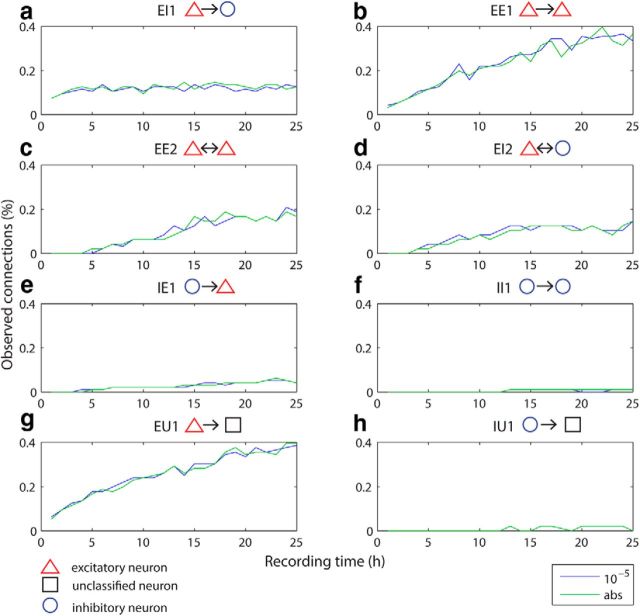Figure 9.
Detection probabilities over different hour segments for different categories of connection types. Significance thresholds (α 10−5 and abs) are color coded and indicated at the bottom right of the figure panel. The median of the bootstrapped detection probabilities, normalized by the total number of neuron pairs (4787) including excitatory, inhibitory and unclassified neurons for 1 to 25 h are plotted for the two different significance thresholds for eight different types of connections: (a) unidirectional excitation from an excitatory neuron onto an inhibitory neuron, EI1; (b) unidirectional excitation between two excitatory neurons, EE1; (c) reciprocal excitation between excitatory neurons, EE2; (d) reciprocal connection between an inhibitory and an excitatory neuron, EI2; (e) unidirectional inhibition from an inhibitory neuron onto an excitatory neuron, IE1; (f) unidirectional inhibition between two inhibitory neurons, II1; (g) unidirectional excitation from an excitatory neuron onto an unclassified neuron, EU1; and (h) unidirectional inhibition from an inhibitory neuron onto an unclassified neuron, IU1. The most abundant connection types in mPFC are excitatory connections (a–d, g). Their detection probability increases with longer recording times except for EI1, which seem to be already reliably detected at shorter recording times (a). Inhibitory connections are rarely detected in our dataset and their detection probability does not improve significantly with longer recording times.

